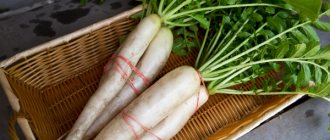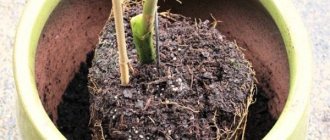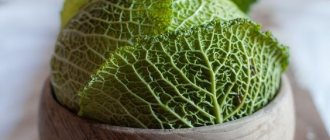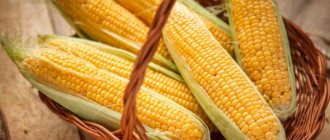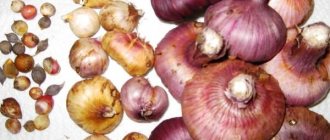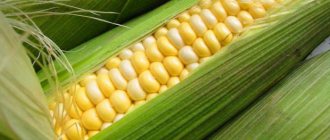Fans of kohlrabi cabbage appreciate it for its excellent taste. The succulent crop is rich in plant proteins, carbohydrates, potassium, sulfur, and surpasses lemon in vitamin C content. Its rich vitamin and mineral complex and low calorie content can be the envy of other fruits and vegetables. But maintaining the nutritional value of this type of cabbage can be difficult due to its tendency to become lignified. How to properly store kohlrabi in winter after harvesting, given this unpleasant feature?
How does variety affect preservation?
Before considering the question of how to store kohlrabi cabbage, let’s take a closer look at the varieties that are suitable for this.
Of the 26 varieties in the register of breeding achievements, “Giant” is the only one that Fr.
You can store varieties that are resistant to lignification for some time:
- "Eder P3";
- "Cartago";
- "Picant";
- "Gusto".
But since they are early and mid-season, they definitely won’t last until winter.
For winter storage it is better to choose late varieties. This is the already mentioned “Giant”, which, under proper conditions, can lie for up to 3 months. And also less durable:
- "Violeta";
- "Hummingbird"
The varietal assortment of the crop includes green and purple varieties
Find out how to store other types of cabbage at home in winter: white cabbage, cauliflower, Peking cabbage, broccoli.
Features of the variety
Kohlrabi is a biennial plant that is a type of common white cabbage. Fruits may vary in shape and color. They are oval, egg-shaped or round. Depending on the color, the following types are distinguished:
- White ones are considered early ripening. That's why they are very popular.
- Purple - these include mid-early and late-ripening species. The fruits develop more slowly. On average, the growing season lasts 3 months.
For long-term storage, it is recommended to use varieties of late varieties - it is better to choose purple varieties.
Cleaning and preparation for storage
Now let's figure out when to harvest fresh heads of cabbage and how preparation affects the storage of cabbage.
Kohlrabi harvesting begins between the 15th and 20th of October. It is advisable to choose dry, fine days when the air temperature is between 3-5 °C. If you didn’t make it before the first frost, don’t despair. Down to -4 °C nothing will happen to the heads of cabbage.
Tip of the day
Do not keep cabbages in the ground longer than expected. Overgrown fruits are not suitable for consumption. Their flesh becomes fibrous, tough and bitter.
Cleaning and storage is a process that has its own rules:
- When stem fruits are harvested and prepared for long-term storage, they are pulled out by the roots, the leaves are cut off, leaving petioles of 1.5-2 cm.
- If the cabbage is pulled out for cooking immediately or within a month, feel free to trim off the root and leaves with petioles.
- In any case, leave the heads for 1-1.5 hours in a dry, dark place so that the earth dries and crumbles.
Don’t throw away the leaves, they are suitable for cooking. Wrap in parchment paper, then in a bag and in the refrigerator. This way the freshness of the greens will remain for 3-4 days.
Tip of the day
When you finish cleaning, do not wash the kohlrabi; it will be enough to carefully remove the remaining soil. Try to maintain the integrity of the peel, otherwise the vegetables will quickly deteriorate and rot.
When to remove kohlrabi cabbage from the garden
Kohlrabi is considered one of the most cold-resistant garden crops. The vegetable is not afraid of short-term frosts either in spring or autumn. It is possible to get 3 harvests per season - the earliest ripening varieties ripen in 2 months. But such vegetables are immediately eaten or processed.
They are not suitable for long-term storage. This is due to the more tender pulp of the early varieties. Late varieties are subject to long-term storage - the harvest is harvested in the fall when the vegetable reaches the required degree of maturity.
Attention! If kohlrabi is left in the garden for too long, it loses its beneficial components and taste - it becomes dry, hard and fibrous.
Ripening time
When to harvest kohlrabi cabbage:
- Early ripening (Moravia, Sonata F1, Vienna white 1350) - 55-70 days from emergence. They get 2-3 harvests per season.
- Mid-season (Violetta, Azur, Blue Planet F1) - 80-120 days after the first shoots.
- Late ripening (Giant, Globe) - after 120-180 days. These varieties, which have dense pulp, are excellent for long-term storage.
The time of ripening and harvesting depends on the planting date of a particular variety. Early ones are planted in April and harvested in June. Further replanting is permissible - the harvest is harvested in August.
Late varieties are recommended to be planted in June and harvested at the end of September or October . The air temperature should not fall below -4°C. Short-term frosts will not harm the vegetable.
Signs of maturity
To determine the maturity of cabbage, they are guided by the diameter of the stem. A ripe vegetable has a diameter of 7-8 cm (for early varieties), 8-10 cm (for late varieties). With further growth, the cabbage coarsens, becomes dry and tough.
The weight of a ripe fruit is 90-120 g, the weight of late-ripening hybrids can reach 500-600 g.
How to harvest correctly
With proper care, you can harvest 2 kg of cabbage from 1 m² of soil. It is recommended to choose a dry, sunny day for harvesting vegetables. You can collect kohlrabi together with white cabbage.
Attention! If night frosts have already begun, it is better to wait until the second half of the day (until above-zero temperatures).
To make it easier to remove the vegetable from the ground, the soil is watered the day before harvesting. The use of special equipment is not required. Before storing them with garden pruners, cut off all the leaves from the cabbage, leaving only the small ones at the top.
Storage conditions and periods
The dependence of the shelf life of kohlrabi on the chosen location or storage method is shown in the table below:
Shelf life of kohlrabi (table)
During storage, it is important to maintain the temperature no higher than 0-2 °C, humidity - within 95-100%. It is desirable that air circulate freely in the room, which will prevent the growth of mold and bacteria. If the conditions are met, it is possible to keep vegetables fresh for a long time.
Do you know that…
To provide the necessary humidity, just place a container of water in the storage and add liquid as it evaporates.
Preserving cabbage for the winter
Kohlrabi is well suited for preparation, so housewives can pickle, salt and ferment it. In this case, stem fruits can be preserved separately or together with other vegetables as an addition to a salad or assortment. There are no special subtleties in processing kohlrabi, so your favorite pickles recipe will do.
Kohlrabi can be an excellent addition to the diet in the autumn-winter period. Due to the high content of vitamins and microelements, its consumption is an effective prevention of vitamin deficiency, which is especially important in winter, when most vegetables are unavailable. Knowing the basic rules for storing kohlrabi, it’s easy to stock up on this cabbage for the whole winter and enjoy delicious dishes with its addition.
The best storage is a cellar or basement
Storing kohlrabi in the cellar is possible in three ways:
- in limbo;
- in baskets, boxes in layers;
- in sand, perlite or vermiculite (see “5 reasons to use perlite and vermiculite for winter storage of vegetables, fruits, rhizomes, tubers and bulbs”).
Select healthy stem fruits for hanging in basements. Stretch the wire, rope, hang the heads of cabbage at a distance of 3-5 cm from each other. Free placement is an important condition for long-term storage in winter. However, like humidity, the lack of which will quickly wither the reserves.
Vegetables are also well stored in cellars if they are placed in layers in baskets or boxes. Sprinkle moistened sand, perlite or vermiculite on top and cover with plastic wrap. Do not pack tightly, otherwise the crop will freeze and begin to rot.
Tip of the day
In order for cabbage to remain juicy for a long time and delight you with its ideal appearance, you need to provide air access to it. Therefore, do not place boxes on the floor, but place them on racks or gratings.
“Planting” in wet sand is another proven way to prepare kohlrabi for the winter. Pour a layer of damp river sand directly onto the floor or into the boxes, stick the stems with their roots down, at a distance of 5-7 cm from each other. Moisten the sand periodically. Twice a month, review your supplies, remove spoiled specimens, and if turgor is lost, increase watering of the sand.
Harvesting kohlrabi and “planting” it for storage
Where and how to store stem fruit
In order for kohlrabi to retain its presentation, freshness and maximum nutrients until spring, you can send it for storage in the cellar, or find a suitable place in the apartment.
At home
At room temperature, kohlrabi can only stay fresh for a few days. For longer storage, vegetables should be kept in special conditions.
In a refrigerator
If there is no cellar or basement, you can use the refrigerator to store kohlrabi.
- After collecting stem fruits from the garden, cut off the roots and foliage, as they will draw moisture from the head, and it will quickly become flabby. It is important to leave the cuttings, so there will be no damage on the head of cabbage through which bacteria that can cause rot can enter.
- Wrap each prepared head of cabbage with damp paper or cloth.
- Pack in polyethylene bags; there is no need to tie them tightly; it is important to provide air access to the fruit.
- Place vegetables on the bottom shelf of the refrigerator.
In such conditions, kohlrabi can be stored for no more than a month. After this period, the cabbage will become a little coarser and lose its juiciness.
On the balcony
If the balcony is insulated and does not freeze, and is even equipped with clotheslines, then you can hang the stems upside down on wire hooks. However, they should not touch each other. The room temperature should not fall below zero, and the humidity should be 95-98%.
The harvest can also be placed in boxes, leaving a space of 2-3 cm between the heads.
Having provided kohlrabi with all the necessary conditions for storage on the balcony, you can include cabbage in the menu for 1-2 months.
In the cellar
A reliable way to preserve healthy and tasty vegetables for the winter is to store them in the cellar.
- In boxes, baskets, specially designed compartments or on gratings . To do this, the prepared heads of cabbage along with the roots need to be placed several pieces in the selected container. Sprinkle the vegetables with wet sand on top or cover them with plastic, but not tightly so that the stems do not begin to rot.
- In limbo . To do this, stretch a wire under the ceiling and hang the cabbage on it. It is important that the vegetables have roots, this will increase the shelf life of the product. However, they should not contact one another.
- In sand . Pour sand into the box and moisten it. Stick the heads of cabbage into it, stalk down, so that they do not touch each other.
To keep kohlrabi juicy longer during storage in the cellar, it is better to keep it with its roots facing down.
Universal method - freezing
There is another method for preserving kohlrabi at home - freezing. You can store vegetables in the freezer both fresh and as semi-finished products for cooking.
There are several ways:
- Wash fresh kohlrabi, remove the peel, cut into cubes or thin half rings. Blanch for a couple of minutes in boiling water, drain in a colander and immediately run under cold water. Then place on a towel to remove moisture. Pack into containers, bags, and store in the freezer until the end of winter.
- Grate the heads on a coarse grater, package them in portions, and put them in the freezer. There is no need to blanch such a semi-finished product; it is perfectly stored for up to 10-11 months, retains its taste and nutritional properties.
Frozen vegetables are suitable for preparing the same dishes as fresh ones. Does not require defrosting before use.
Tip of the day
If you have never tried frozen kohlrabi, experiment with a small amount of the vegetable - it is not a guarantee that you will like the taste.
Preparation recipes
Particularly popular are pickling, pickling or fermenting vegetables.
Basic recommendations for preparing kohlrabi:
- Use glass, enamel or wooden containers: they do not change the taste of the dish. Non-enamelled metal and plastic react with cabbage juice and marinade, releasing unhealthy compounds into the product and changing the taste of the snack for the worse.
- Sometimes the recipe uses oppression and a stand under it. Plastic and non-enameled metal products are not suitable for this.
- Iodized salt is not suitable for preservation: it reduces the shelf life of the products and makes them bitter. “Extra” makes it easier to over-salt the salad, so it’s better to use regular table salt.
- Vinegar is used not only for table vinegar, but also for apple or wine vinegar. The last two are more healthy and add an interesting flavor to the dish.
- Other vegetables used in the recipe must be fresh, firm and free of disease.
Take note:
Recipes for pickled Brussels sprouts for the winter
Is it possible to salt savoy cabbage for the winter?
How to prepare Korean cauliflower for the winter
Canned cabbage
The simplest classic option for harvesting cabbage stems for the winter.
Ingredients:
- kohlrabi - 5-6 pcs.;
- dill - 4 branches;
- hot pepper - 1 pc.;
- garlic - 4 large cloves;
- salt - 2 tsp. with a slide;
- sugar - 2 tsp;
- coriander seeds - 1 tsp;
- vinegar - 4 tbsp. l.;
- water - 0.5 l;
- bay leaf - 4 pcs.;
- allspice peas - 6 pcs.
This amount of ingredients is enough for 2 half-liter or 1 liter jars. If desired, cherry and currant leaves are added to the appetizer.
How to marinate:
- Kohlrabi is washed, peeled, cut into 4 parts. Each is cut into quarters 0.5–1 cm thick.
- Cover the cabbage with water and cook over low heat for 10 minutes. Then put it in a colander and allow the water to drain.
- Dill is washed and divided into sprigs (the hard stem is thrown away). The garlic is peeled and cut into thin slices. The peppers are washed, cut into rings and seeds removed.
- Prepare the brine: pour water into a pan, add salt, sugar, peppercorns, and bay leaf. The mixture is boiled until sugar and salt dissolve, then vinegar is poured in and immediately turned off.
- Coriander, pepper, garlic and dill are poured into the bottom of sterilized jars. Place boiled cabbage slices on top. Everything is filled with brine.
- The jars are placed in a pan with cold water so that they are in the liquid up to their shoulders. Boil water over low heat for 25–30 minutes.
- The containers are rolled up with sterilized lids, turned upside down, wrapped in a warm blanket and left to cool completely.
Store the blanks in a pantry or basement . They will be ready for use no earlier than in 2 weeks.
Advice! Jars of vegetables are sterilized not only in boiling water, but also in the oven. To do this, place them in a cold oven on a baking sheet, set the temperature to +150°C and leave for 30 minutes.
Pickled
Like white cabbage, kohlrabi is fermented. With this method of cooking, the product not only retains vitamins and minerals, but also becomes even healthier. For this recipe you only need 3 ingredients :
- kohlrabi - 3 kg;
- salt - 4 tbsp. l.;
- sugar - 3 tbsp. l.
If desired, carrots are added to the appetizer. Spices will make the taste more interesting; bay leaf, allspice, black peppercorns.
Preparation:
- Kohlrabi is washed, peeled and chopped on a Korean vegetable grater. The slices are poured into a fermentation container.
- Add sugar and salt. The vegetable is crushed so that it releases its juice.
- The cabbage is compacted. A wooden circle and oppression are placed on top. If after 24 hours the juice has not covered the vegetables, add a little cold brine prepared from 1 liter of water and 1 tbsp. l. salt.
Ferment the vegetable at room temperature for a week . Then they are placed in jars with nylon lids and put in a cool place.
Advice! Cabbage in a wooden container acquires a particularly pleasant taste.
Salty in Abkhazian style
This option will appeal to lovers of hot and spicy dishes.
Ingredients:
- kohlrabi - 3 kg;
- garlic - 2 large heads;
- salt - 5 tbsp. l. without slide;
- cilantro or celery greens - 1 bunch;
- hot pepper - 2-3 pods;
- water - 3 l;
- dry dill - 1 tbsp. l.;
- ground fenugreek - 1 tbsp. l.;
- thyme (thyme) - 1 tbsp. l.;
- corn flour - 4 tbsp. l.;
- dried ground basil - 1 tbsp. l.
For this recipe, both the stem fruit and the leaves are used. Abkhazians add dried milkweed fruits to the salting to give the dish a golden color.
How to salt kohlrabi:
- The cabbage is washed. The top layer is removed from the stem fruit, the pulp is cut into circles. The greens are finely chopped.
- The garlic is peeled and chopped. The pepper is cut into rings, removing the seeds.
- Kohlrabi is placed in layers in a deep, preferably wooden container. Each layer is sprinkled with garlic, fenugreek, basil, dill, hot pepper, thyme, and chopped herbs.
- Prepare the brine: dissolve salt in boiled hot water. Leave until completely cool.
- Pour cold brine over vegetables. Cornmeal is tied into a cloth bag and placed in a jar.
The container with pickling is covered with a lid and placed in a cellar or pantry. The cabbage will be ready for consumption no earlier than in a month.
Advice! You don't need to use a bag of cornmeal. Then the taste of the snack will be softer.
Marinated with beets
Some housewives marinate kohlrabi with beets. This preparation acquires a beautiful pink color and an unusual taste.
Will be needed:
- kohlrabi - 1 kg;
- red beets - 0.5 kg;
- bay leaf - 4 pcs.;
- allspice peas - 6 pcs.;
- sugar - 2 tbsp. l.;
- salt - 2 tbsp. l.;
- vinegar - 3 tbsp. l.;
- water - 1.5 l;
- garlic - 5 cloves.
Additionally, the recipe uses black peppercorns, dill seeds or fruit tree leaves. They will make the taste of the dish more interesting.
How to cook:
- Kohlrabi and beets are boiled until half cooked in different containers. Then remove from the water, cool, remove the top layer and cut into large cubes.
- Place allspice, peeled garlic, and bay leaves on the bottom of the jars. Vegetables are laid out in layers.
- Add sugar and salt to the water and bring to a boil. When the crystals dissolve, add vinegar. The marinade is immediately turned off and poured into jars with vegetables.
- The containers are placed in water and sterilized for 30–40 minutes. Then they roll up the lids, turn them upside down and leave them under a warm blanket until they cool completely.
Such preparations are stored in a cellar or pantry for several years.
Useful tips
Experts give the following recommendations for storing Kohlrabi cabbage:
- Do not wash fruits during long-term storage. It is enough to clean the heads of cabbage from soil residues.
- If the humidity in the cellar or basement is insufficient for storage, the fruits can be crushed with moistened sand or covered with thick plastic film.
- There is no need to close the boxes or bags with heads of cabbage too tightly to prevent the process of rotting. There must be air flow.
- Coves, trenches, and greenhouses are suitable for storing large quantities of crops. Vegetables should be sprinkled with sand in them.
Did you know? Kohlrabi cabbage is a dietary product and can be used in the diet of children, the elderly and pregnant women.
100 g contains about 27 kcal, 62 mg of vitamin C, 350 mg of potassium, as well as other vitamins and minerals. Kohlrabi cabbage should be collected in time before it is overripe and stored properly. Vegetables with hardened flesh are no longer as pleasant to the taste.
